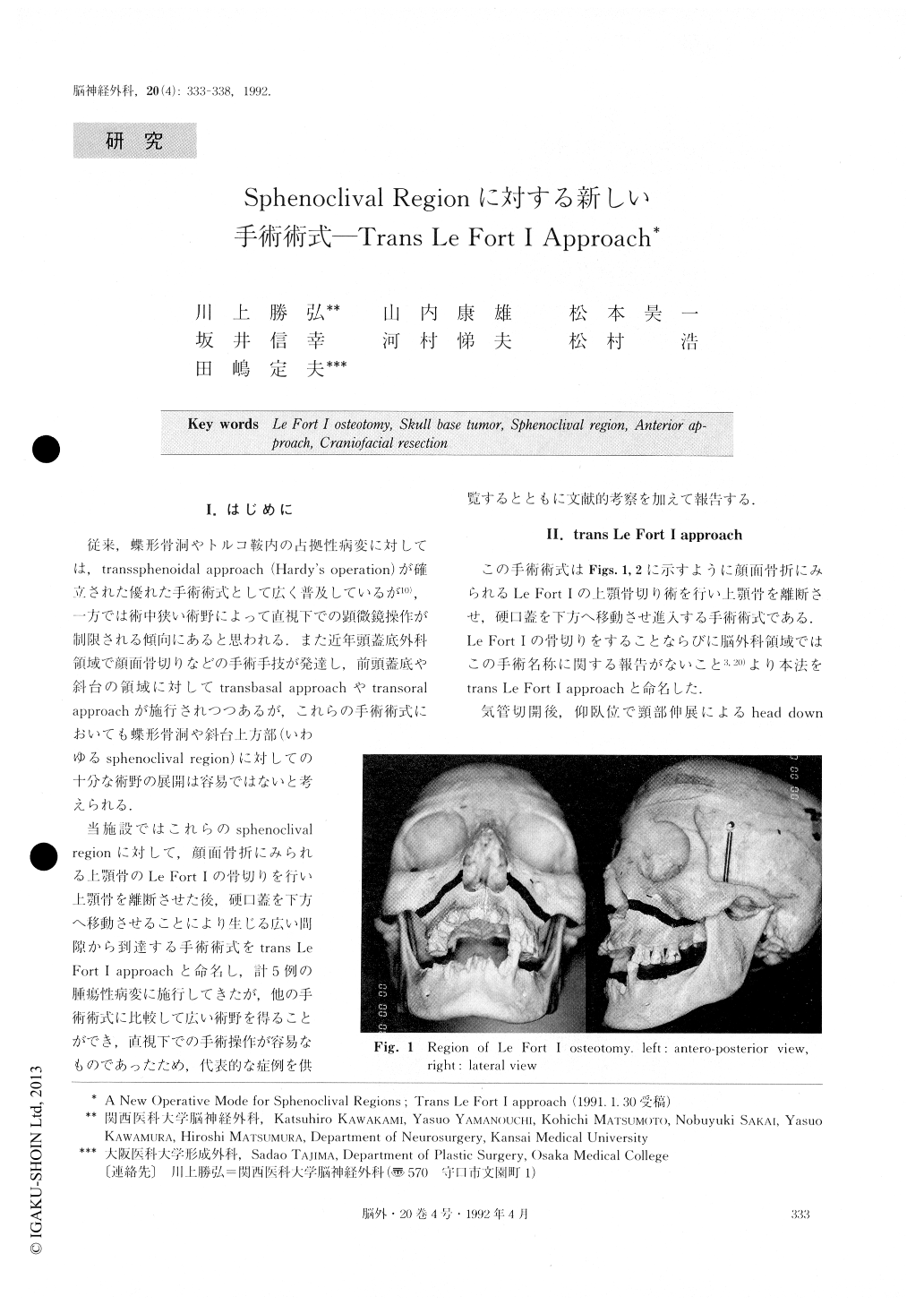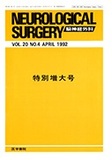Japanese
English
- 有料閲覧
- Abstract 文献概要
- 1ページ目 Look Inside
I.はじめに
従来,蝶形骨洞やトルコ鞍内の占拠性病変に対しては,transsphenoidal approach(Hardy's operahon)が確立された優れた手術術式として広く普及しているが10),一方では術中狭い術野によって直視下での顕微鏡操作が制限される傾向にあると思われる.また近年頭蓋底外科領域で顔面骨切りなどの手術手技が発達し,前頭蓋底や斜台の領域に対してtransbasal approachやtransoralapproachが施行されつつあるが,これらの手術術式においても蝶形骨洞や斜台上方部(いわゆるSphenoclival region)に対しての十分な術野の展開は容易ではないと考えられる.
当施設ではこれらのSphenoclivalregionに対して,顔面骨折にみられる十顎骨のLe Fort Iの骨切りを行い上顎骨を離断させた後,硬口蓋を下方へ移動させることにより生じる広い間隙から到達する手術術式をtrans LeFort I approachと命名し,計5例の肺瘍性病変に施行してきたが,他の手術術式に比較して広い術野を得ることができ,直視下での手術操作が容易なものであったため,代表的な症例を供覧するとともに文献的考察を加えて報告する.
Tumors in the sphenoclival region have conventional-ly been approached transseptally (transsphenoidally) or transorally ; however, the following disadvantages have not allowed wide application of these approaches ; 1) limited operative field, especially at the lateral side, 2) unsatisfactory repair for the dural defects. We have ap-plied Le Fort I osteotomy for lesions in this region, and we called the operative technique, by which we approached via the space that was obtained by moving the osteomized maxillary bone to the mandibular hone, trans Le Fort I approach. We have applied this approach in 5 patients and obtained a substantially wider operative field than that obtained by the conven-tional approach, with successful results. Three out of 5 patients were operated on via this trans Le Fort I approach, and the other 2 via this approach combined with mandibular midsplitting, which was performed to make a median osteotomy of the mandibular bone to accommodate osteomized maxillary bone (this techni-que is referred to as trans Le Fort I with mandibular midsplitting). The tumor was totally resected in 4 cases, and subtotally in 1 case with wide dural incision. One case was temporarily complicated with diabetes in-sipidus after the operation, but there were no complica-tions in the remaining cases. Prognoses in patients were good in 2, fair in 1, and poor in 2 clue to tumor progres-sion.
Although tracheostomy is inevitable with this approach, we think this technique is beneficial in opera-tions of the skull base because, compared with conven-tional techniques, a somewhat wider operative field can be expected with this technique.

Copyright © 1992, Igaku-Shoin Ltd. All rights reserved.


